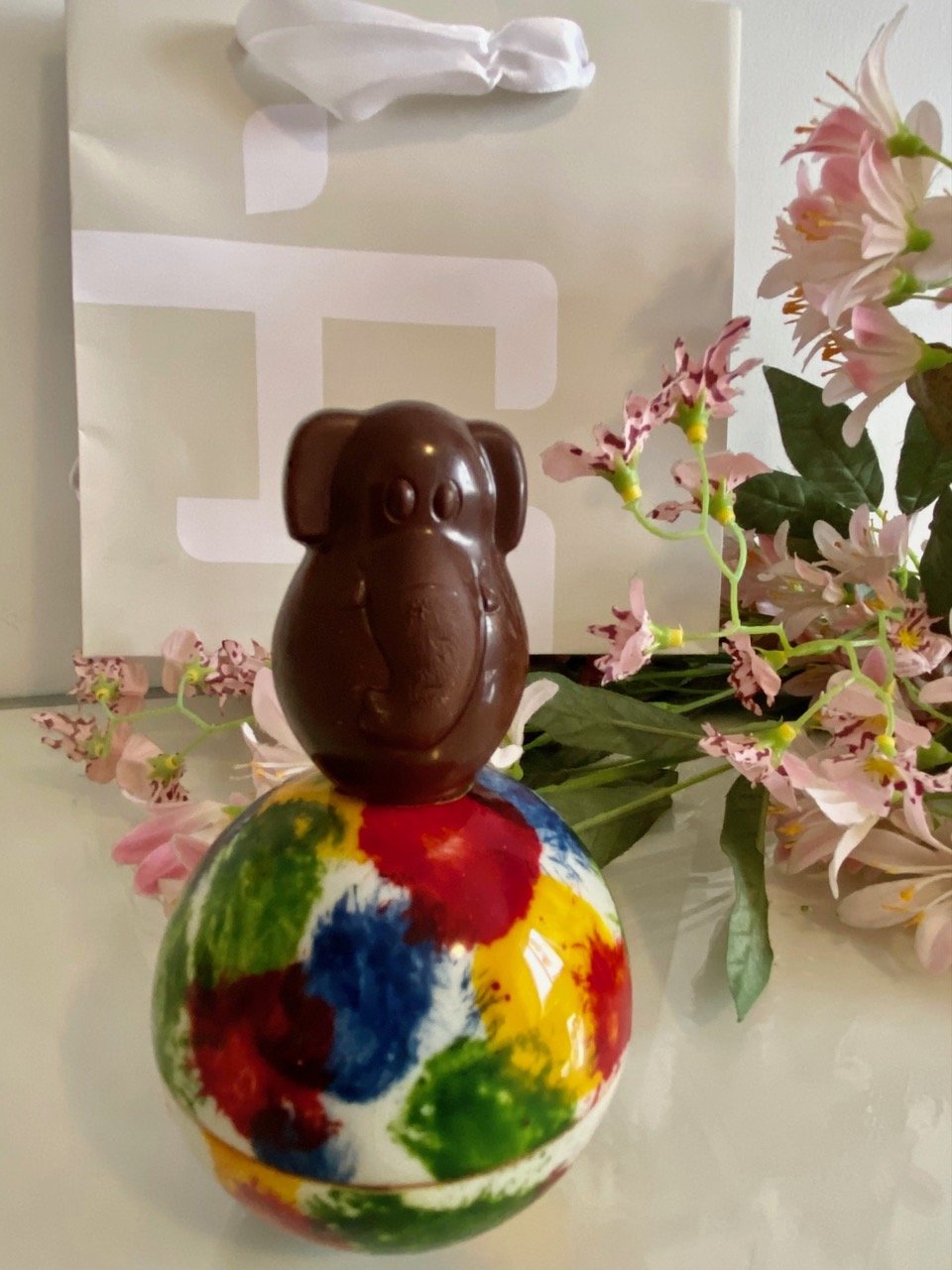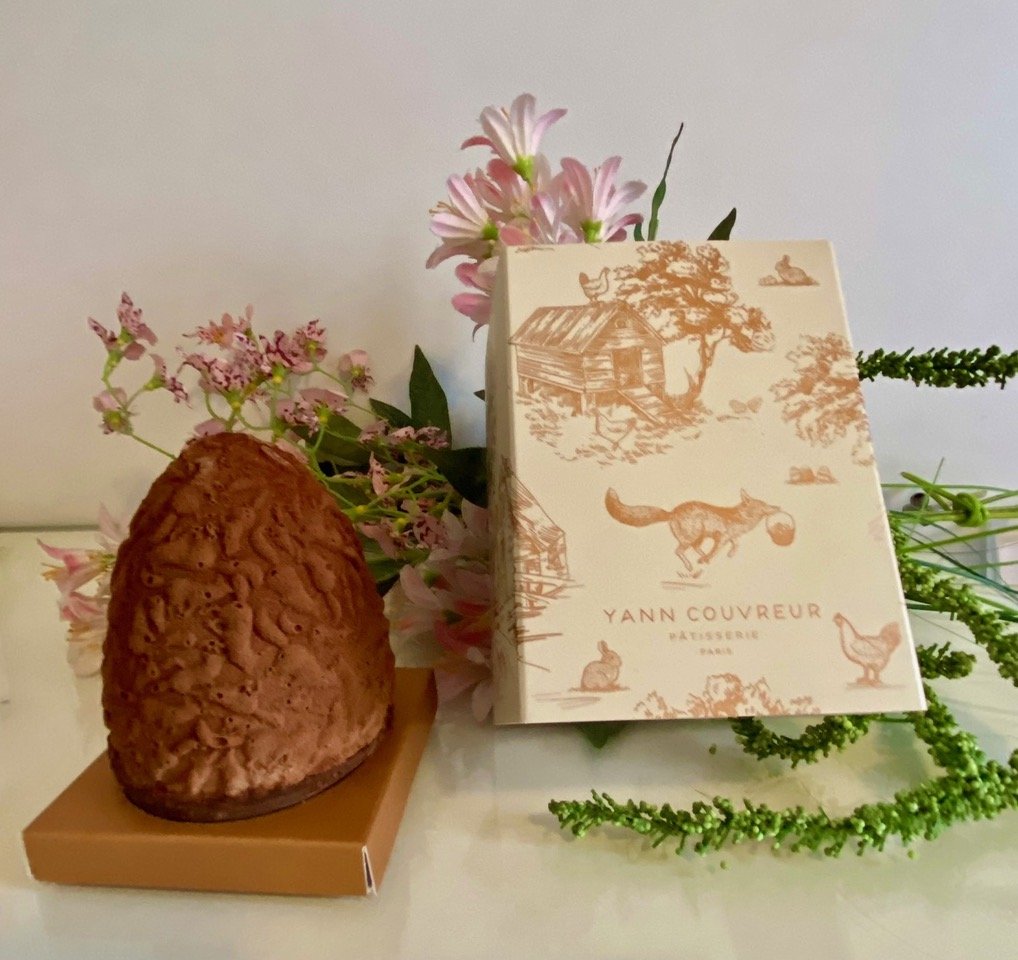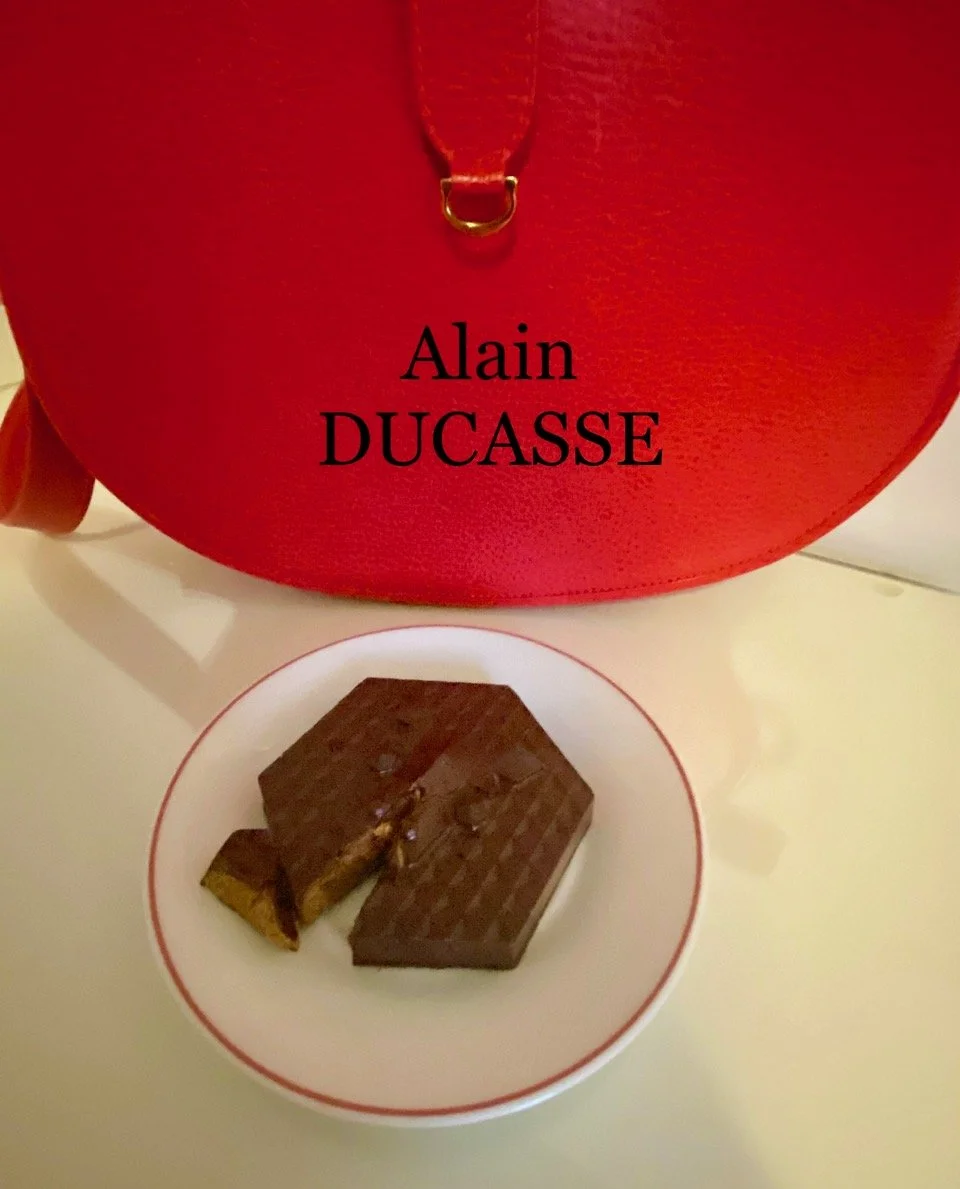Eggs and Fish and Elephants, Oh My!
Paris chocolates
It is said that you can never be too rich or too thin. But I am here to tell you that you definitely can have too much chocolate! As I tried to understand my post-Easter chocolate ennui, I thought the problem was my selection. But as I reflect upon it, I think it was less a function of my choices than the constraints imposed by the French Easter Chocolate tradition. By which I mean, praline. Pralines are nut fillings. Not whole nuts or chopped nuts but roasted nuts (most often hazelnuts, sometimes almonds, occasionally pistachios or pecans) that are ground with sugar into a very smooth paste. Pralines have been around a long time. It was the chef of a 17th century French diplomat from whom the nut paste got its name: the Duc de Choiseul, comte du Plessis-Praslin. Praslin became Pralines.
The closest nut based product in the U.S. that I can compare the praline to, is peanut butter. Smooth, not chunky and with added sugar, lots of added sugar. More like Skippy than the peanut butter you get from nuts you grind yourself at the health food store. Although sometimes there is a pleasantly gritty texture, that’s when a bit of cacao nibs are added - crushed, not ground. But it’s not like Nutella, the much beloved chocolate /hazelnut spread which is ideally a 70% hazelnuts and 30% chocolate. Please don’t confuse praline with ganache, those often extremely inventive cream based fillings (caramel to cardamon; yuzu to you name it) with a very short shelf life.
Here’s how it went for me. I received a beautifully embossed dark chocolate egg from Yann Couvreur. (Figures 1, 2) The egg was not solid, it was not filled. In section, it was composed of a thin layer of embossed chocolate on a slightly thicker layer of dark chocolate next to a slightly thicker layer of hazelnut praline mixed with a layer of brittle and a final interior wash of dark chocolate. Each layer was just thick enough. Each was just distinct enough. Each bite was a symphony of tastes and textures that worked beautifully together.
Figure 1. Easter egg from Yann Couvreur, embossed with foxes (Couvreur’s symbol)
Figure 2. Yann Couvreur Easter egg opened - embossed layer, chocolate layer, praline layer, final chocolate wash
And if I had stopped there, everything would have been fine. But I didn’t. I went to Alain Ducasse and bought a Hexa Agneau. An hexagonal shape (in honor of the shape of France) dark chocolate bar with the stylized face of a lamb on one side. Sandwiched between the two layers of chocolate was a noisette praline, lightly scented with romarin, (rosemary). (Figures 3, 4) If I had chosen milk chocolate, the praline would have been lightly scented with thyme.
Figure 3. Hexa Agneau, Easter chocolate Alain Ducasse
Figure 4. Hexa Agneau open to reveal …. Rosemary scented hazelnut praline center
Maybe if I had stopped there, it would have been okay, the same but different. But I didn’t, I walked over to Jacques Genin bought an Easter chocolate called a Culbuto. (Figure 5) It was white and round with a chocolate elephant on top. In section it was this: a thin white chocolate hand painted shell (Figure 6) in vibrant colors on a slightly thicker chocolate shell. It was what was inside the chocolate shell that explains why it was called a culbuto. Which is a children’s toy, a hollow figure whose rounded base is weighted so that even if the toy is knocked over, it springs back up. (Figure 7) Since the top half of the chocolate culbuto was empty, the bottom half was full. Of hazelnut praline, of course. (Figure 8)
Figure 5. Jacques Genin holding an Easter chocolate Culbuto with elephant top
Figure 6. Woman who hand painted Genin Easter chocolates
Figure 7. Toy Culbulto
Figure 8. Hand Painted white chocolate on dark chocolate, hollow at top, hazelnut praline on bottom, with hollow elephant handle
My last stop was Jean Paul Hevin, where I finally changed it up. I chose a dark chocolate fish with a pink almond paste paddle. (Figure 9) The salesperson assured me that while the fish was hollow, there were ‘fritures de Paques’ inside. Fried fish? That surely wasn’t what he meant. When I chopped my fish open, out tumbled a jumble of little fish. (Figure 10). They are called friture (fried whitebait) because of their shape. And that they are as much a symbol of Easter as eggs and bunnies.
Figure 9. Jean Paul Hevin Dark chocolate fish with a pink almond paste paddle
Figure 10. Hevin Fish with the little chocolate ‘fritures de Paques’ that were inside
Next Easter’s resolution? More admiring, less buying. And, I’m not off chocolate so much as off praline filled ones, at least for a while.
Copyright © 2023 Beverly Held, Ph.D. All rights reserved
Dear Reader, I hope you enjoyed reading this article. Please sign up below to receive more articles plus other original content from me, Dr. B. Merci!
And, if you enjoyed reading this review, please consider writing a comment. Thank you.










